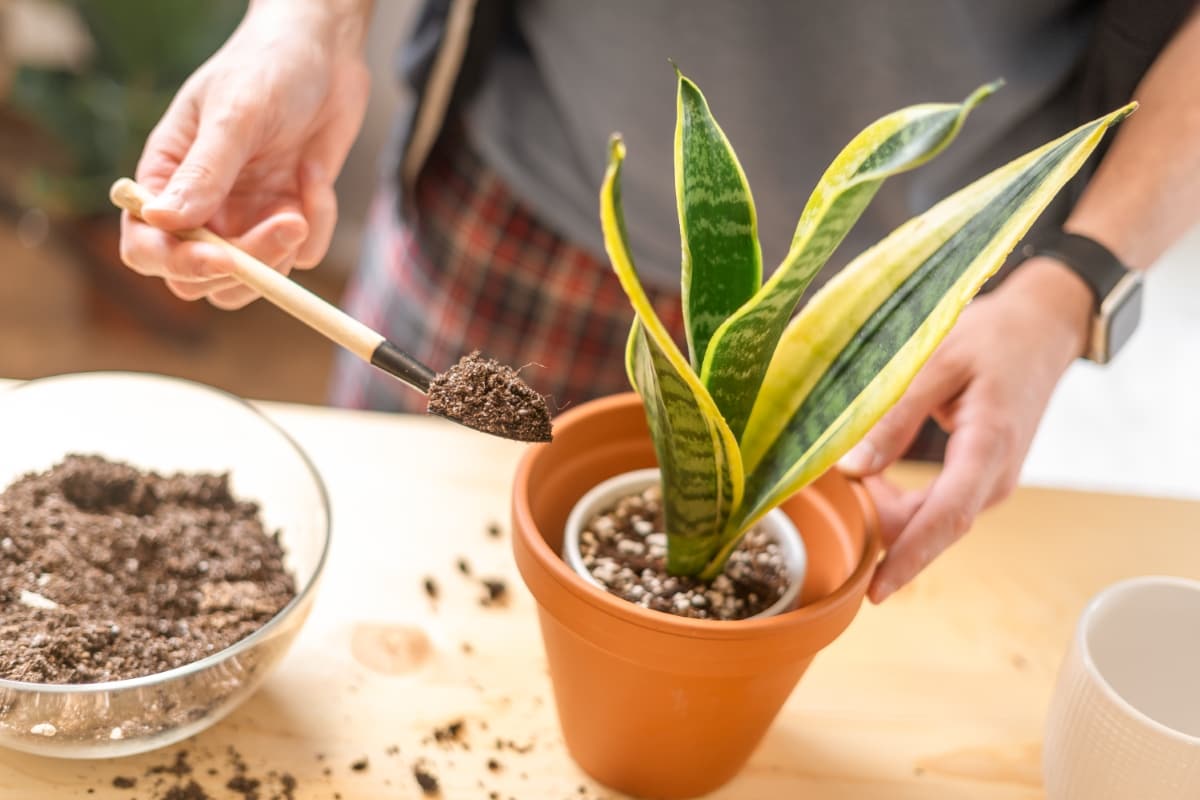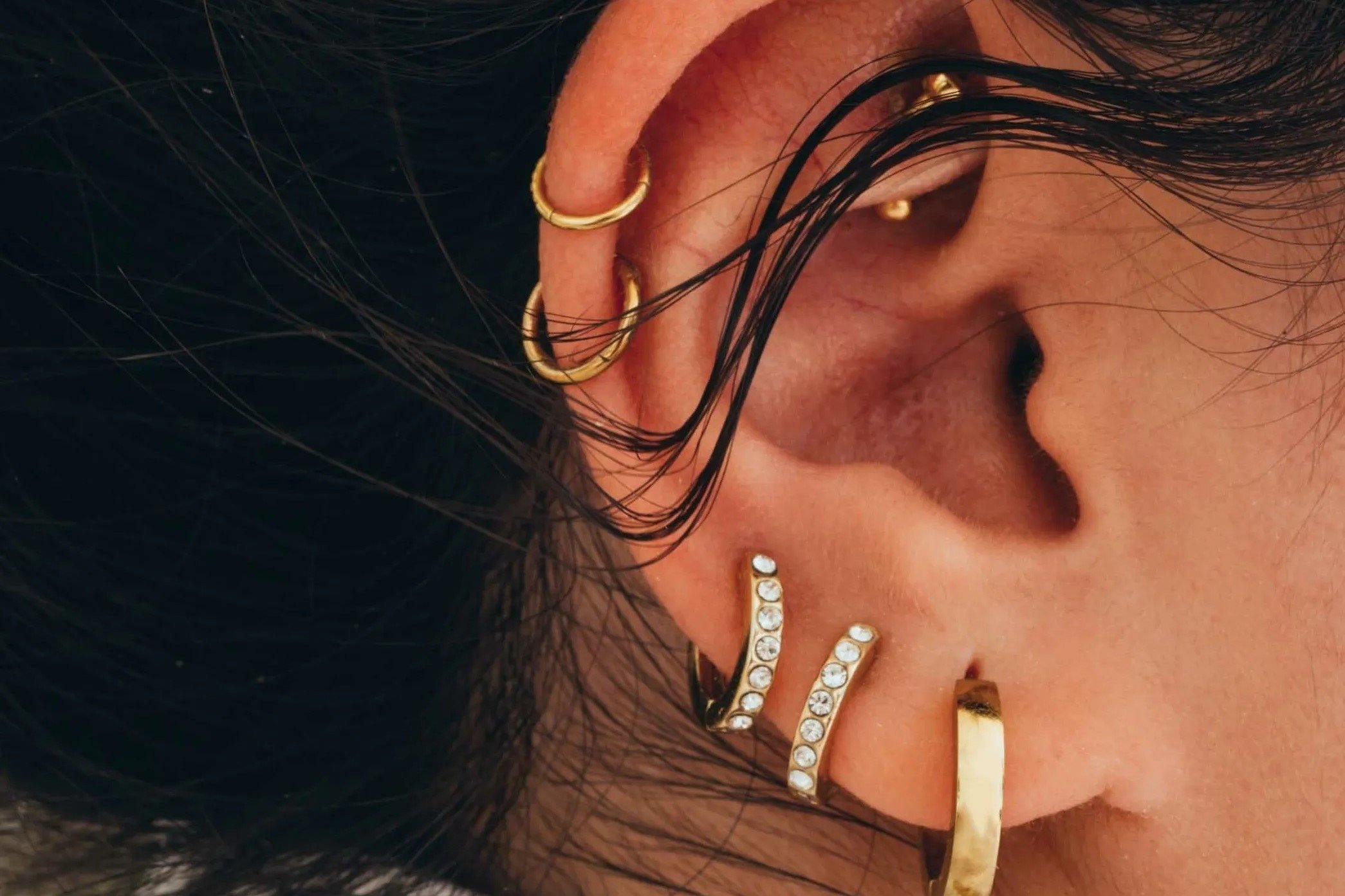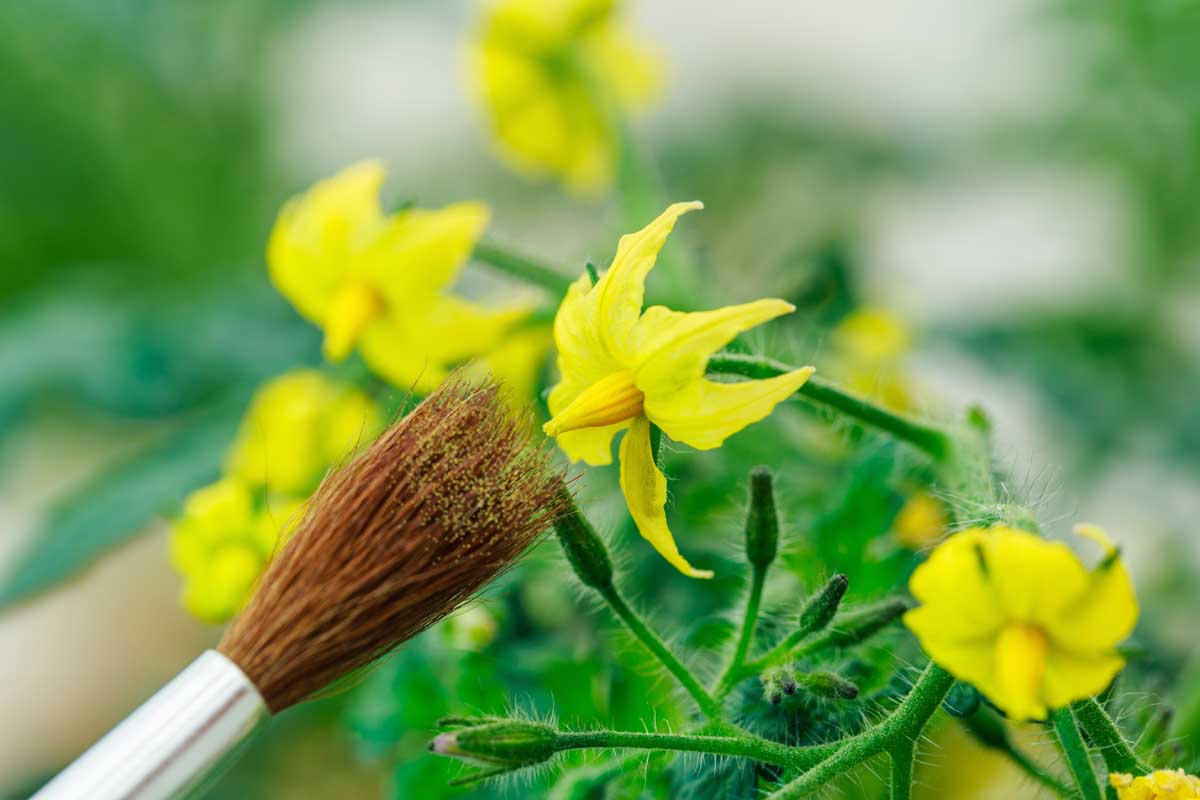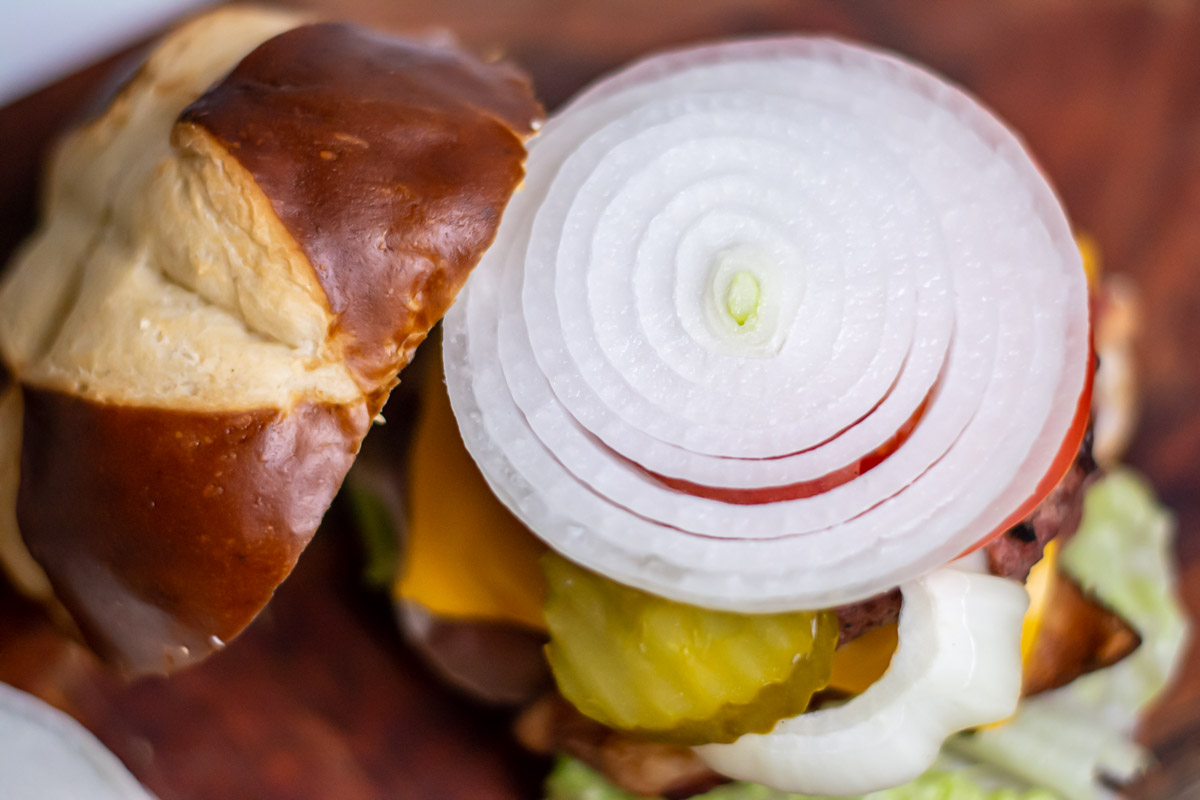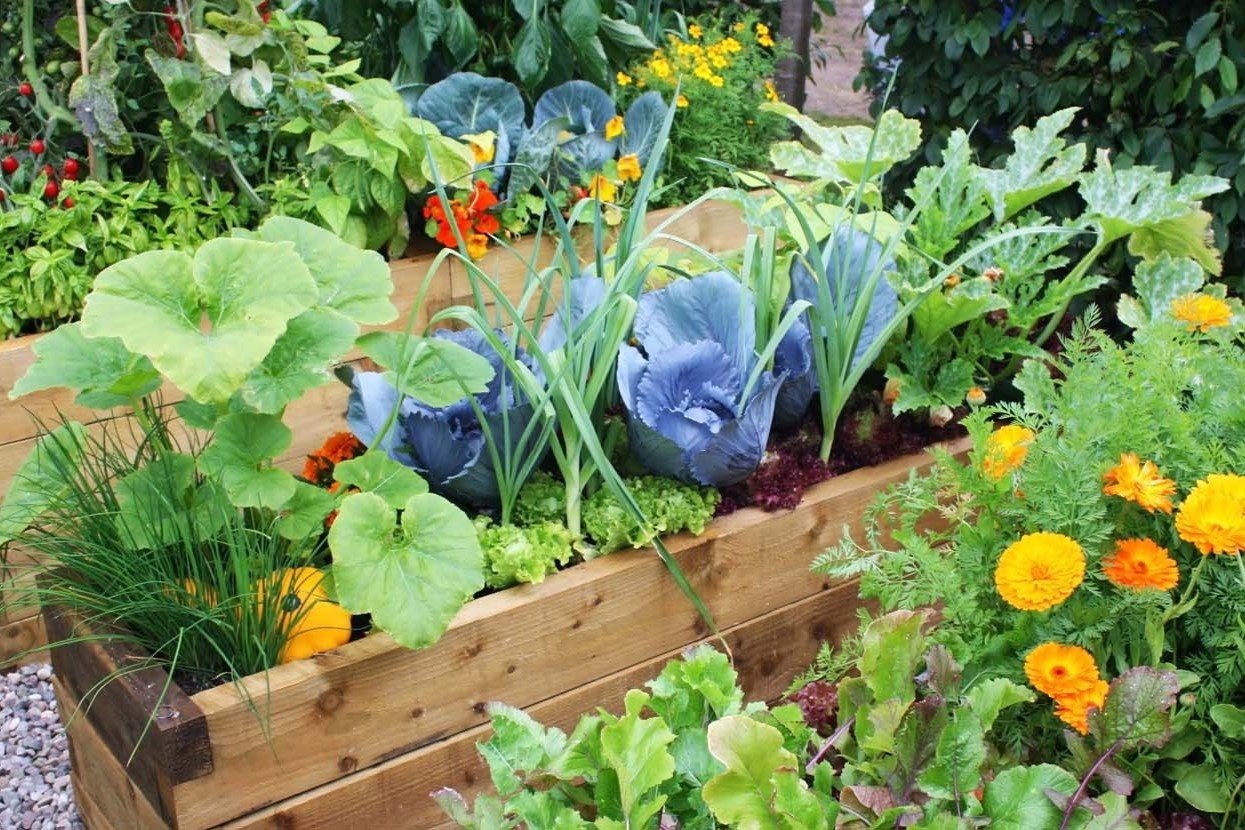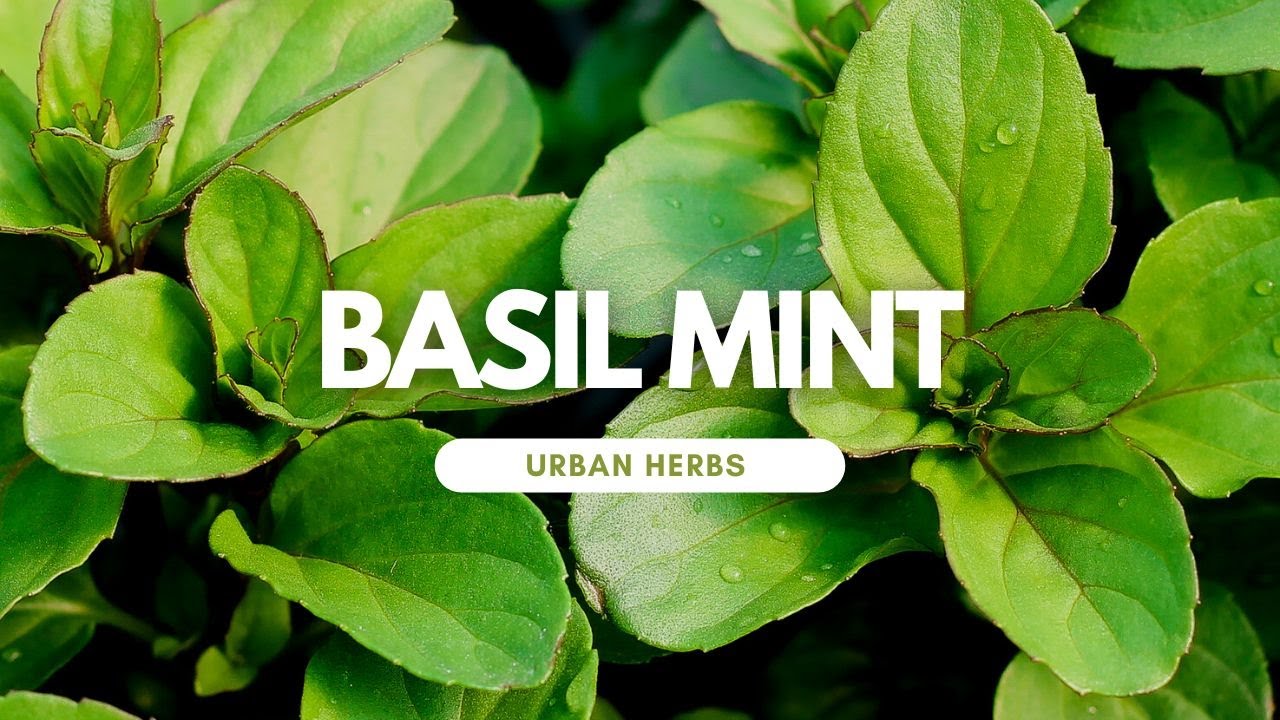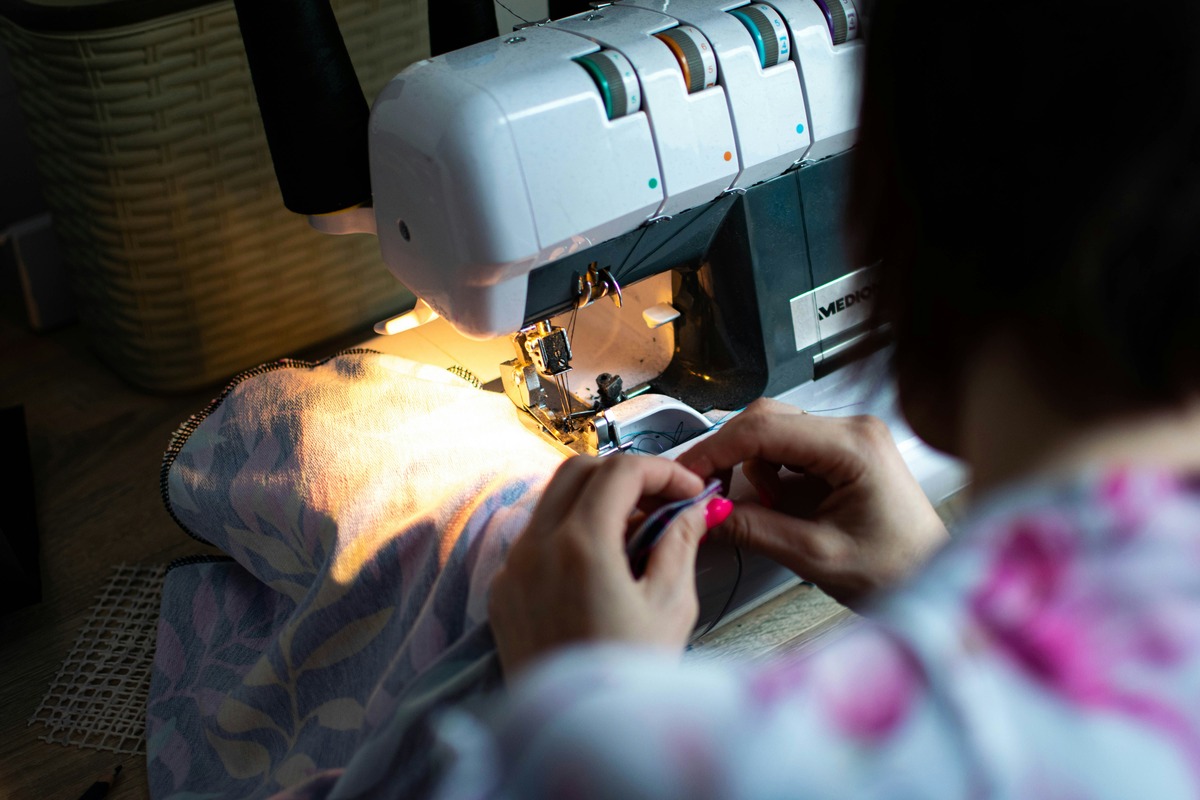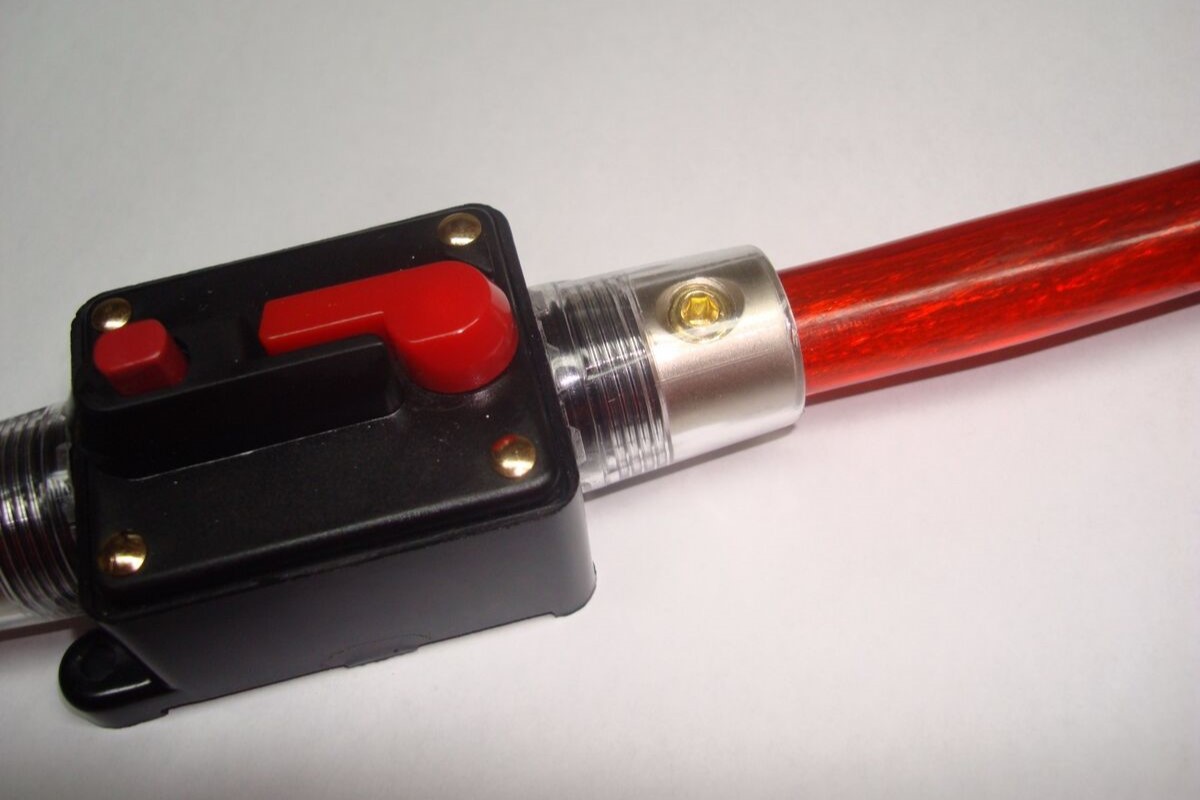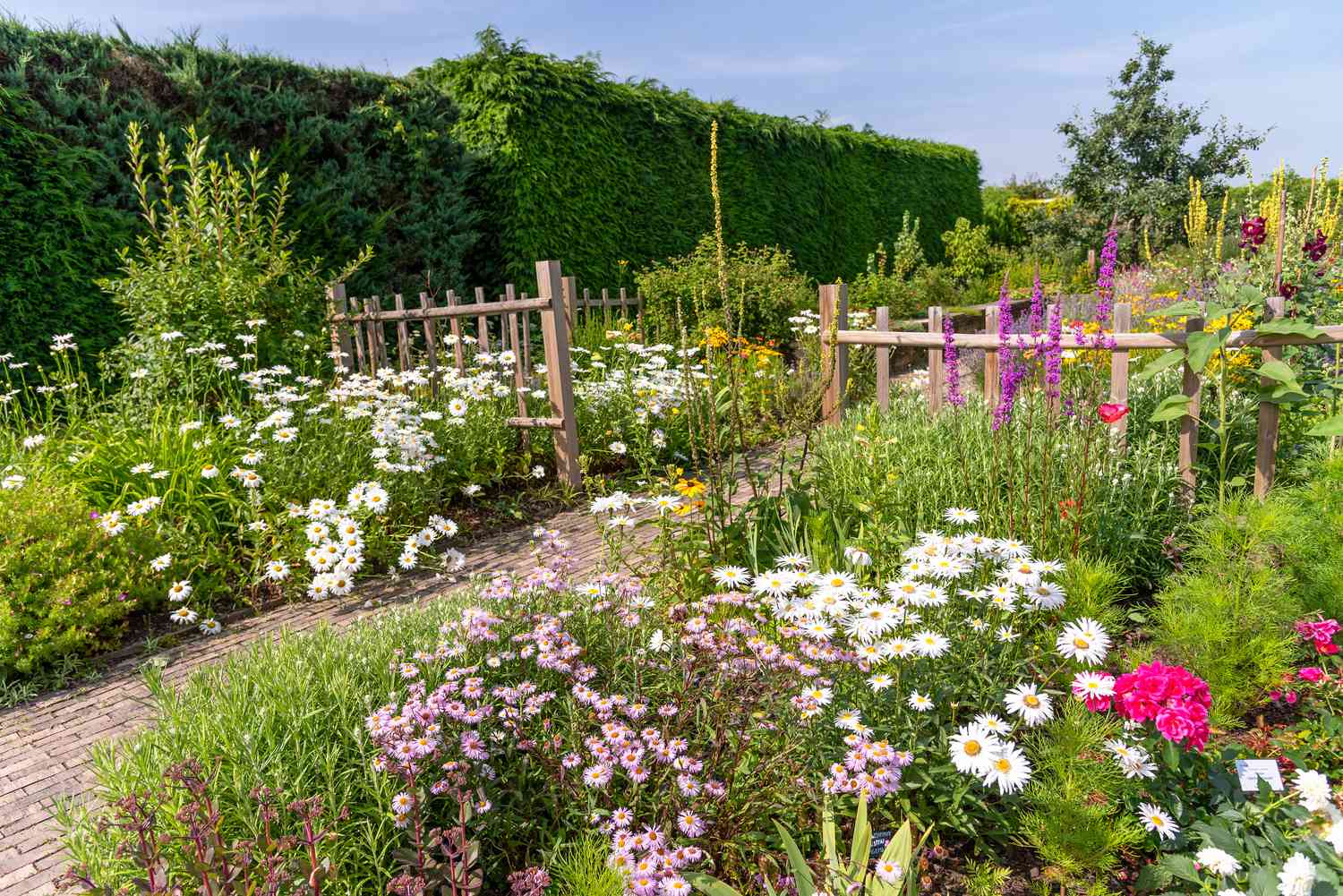Home>Home and Garden>The Ultimate Guide To Perfectly Caring For Your Angel Wing Begonia Plant!
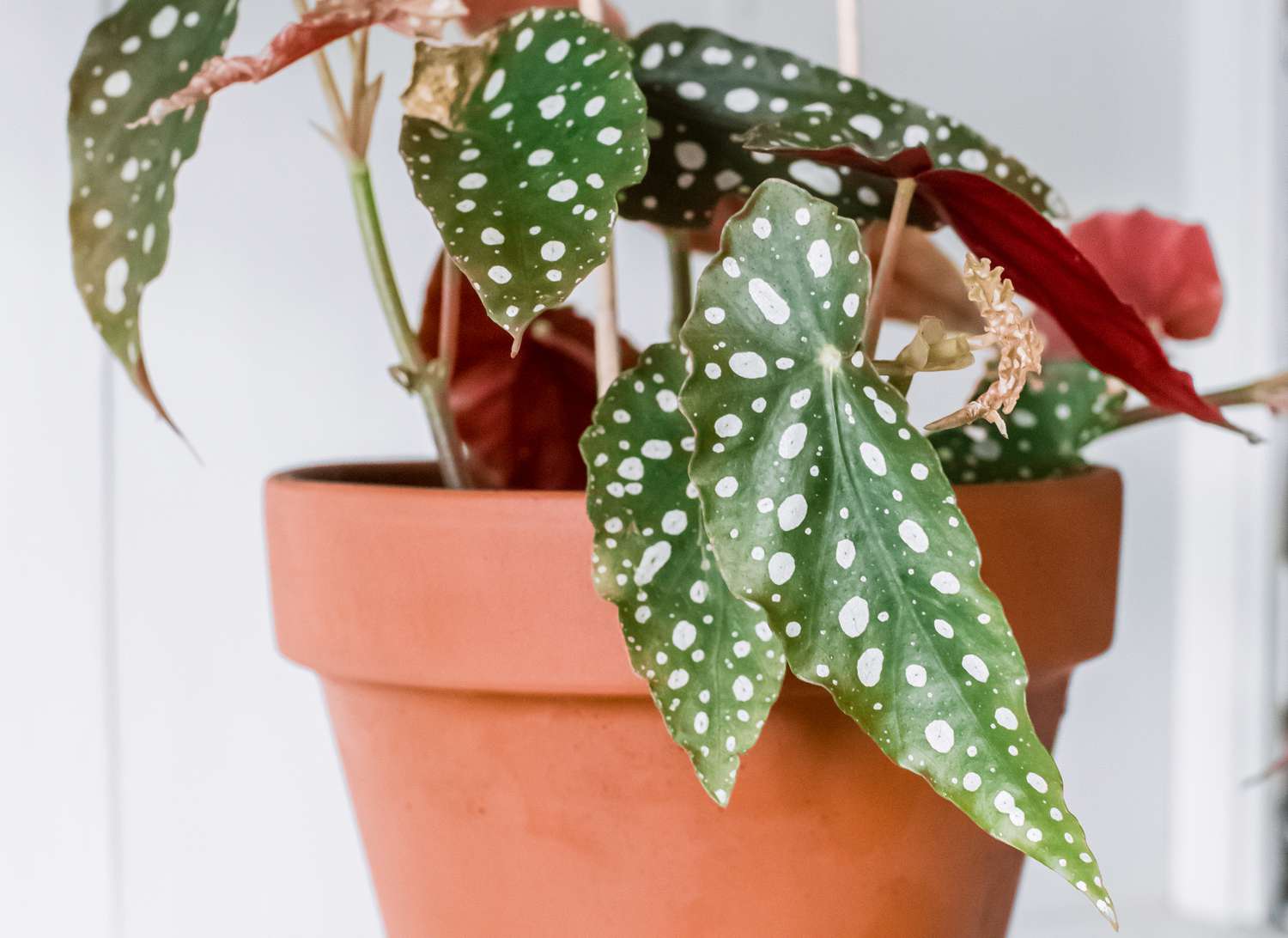

Home and Garden
The Ultimate Guide To Perfectly Caring For Your Angel Wing Begonia Plant!
Published: February 18, 2024
Discover the essential tips for nurturing your Angel Wing Begonia plant to perfection with our comprehensive guide. Enhance your home and garden with expert care advice.
(Many of the links in this article redirect to a specific reviewed product. Your purchase of these products through affiliate links helps to generate commission for Noodls.com, at no extra cost. Learn more)
Table of Contents
Introduction
Welcome to the ultimate guide on caring for your Angel Wing Begonia plant! Whether you're a seasoned plant enthusiast or a beginner looking to add a touch of elegance to your home, this comprehensive guide will equip you with the knowledge and skills needed to nurture and showcase the beauty of this stunning plant.
Angel Wing Begonias, known for their striking foliage and delicate flowers, have captured the hearts of plant lovers around the world. With their angelic, asymmetrical leaves and vibrant blooms, these plants bring a sense of grace and charm to any indoor or outdoor space. As we delve into the intricacies of caring for Angel Wing Begonias, you'll discover the art of maintaining their health and enhancing their natural allure.
Throughout this guide, we'll explore the specific requirements of Angel Wing Begonias, including their light and temperature needs, watering and humidity preferences, soil and fertilization tips, as well as pruning and propagation techniques. Additionally, we'll delve into the common pests and diseases that may affect these plants, equipping you with the knowledge to protect and preserve their beauty.
Furthermore, we'll provide valuable insights on displaying and decorating with Angel Wing Begonias, allowing you to elevate the aesthetic appeal of your living spaces with these captivating plants. Whether you're looking to create a lush indoor oasis or add a touch of sophistication to your garden, the versatility of Angel Wing Begonias makes them a perfect choice for both seasoned gardeners and those new to the world of plant care.
By the end of this guide, you'll be empowered to cultivate a thriving and visually stunning Angel Wing Begonia plant, enriching your home with its timeless elegance and natural allure. Let's embark on this journey of discovery and learn the art of perfectly caring for your Angel Wing Begonia!
Understanding the Angel Wing Begonia Plant
The Angel Wing Begonia, scientifically known as Begonia coccinea, is a captivating and versatile plant that has become a favorite among gardening enthusiasts. This species of begonia is cherished for its unique characteristics, including its angelic-shaped leaves and delicate flowers, which contribute to its ethereal beauty. The leaves of the Angel Wing Begonia are asymmetrical and often adorned with silver speckles, adding a touch of elegance to its overall appearance.
Native to the tropical regions of South America, Angel Wing Begonias thrive in warm and humid environments, making them well-suited for indoor cultivation in various climates. These plants belong to the Begoniaceae family and are renowned for their resilience and adaptability, making them an ideal choice for both experienced gardeners and beginners.
One of the most distinctive features of the Angel Wing Begonia is its ability to produce clusters of pendulous flowers in vibrant hues such as pink, red, or white, depending on the variety. These delicate blooms, which often resemble angel wings, lend an enchanting and whimsical quality to the plant, making it a captivating addition to any garden or interior space.
In terms of size, Angel Wing Begonias typically grow to a height of 18 to 24 inches, with a spread of 12 to 18 inches, making them suitable for containers, hanging baskets, or as part of a lush garden display. Their compact and bushy growth habit, coupled with their ornamental foliage, makes them an excellent choice for adding visual interest and charm to both indoor and outdoor settings.
Angel Wing Begonias are known for their low-maintenance nature, requiring minimal care and attention to thrive. With the right growing conditions and proper care, these plants can reward gardeners with an abundance of lush foliage and delicate flowers, creating a serene and enchanting ambiance in any environment.
As we delve deeper into the world of Angel Wing Begonias, it becomes evident that these plants possess a timeless allure and a captivating presence that transcends traditional boundaries. Their graceful foliage, coupled with their ability to thrive in diverse settings, makes them a cherished addition to any plant lover's collection.
In the following sections, we will explore the specific requirements and care guidelines for nurturing Angel Wing Begonias, empowering you to cultivate and showcase the beauty of these remarkable plants in your own home or garden.
Light and Temperature Requirements
Angel Wing Begonias thrive in environments that offer bright, indirect light. When selecting a location for your plant, aim to provide it with ample natural light without exposing it to direct sunlight, which can scorch its delicate foliage. Placing the plant near a north or east-facing window is ideal, as it allows for gentle, filtered light that promotes healthy growth and vibrant foliage.
In terms of temperature, Angel Wing Begonias prefer a warm and stable climate. Ideally, the temperature should range between 65 to 75 degrees Fahrenheit during the day and not drop below 55 degrees Fahrenheit at night. It's important to shield the plant from drafts and sudden temperature fluctuations, as these can stress the begonia and hinder its overall health.
During the summer months, if the outdoor conditions are suitable, Angel Wing Begonias can be placed in a shaded area of the garden, provided that the temperature and humidity levels align with their preferences. However, it's crucial to monitor the weather and ensure that the plant is shielded from direct sunlight and extreme heat, as prolonged exposure to intense sunlight can lead to leaf scorching.
In colder climates, it's advisable to bring outdoor Angel Wing Begonias indoors before the onset of frost, as they are sensitive to low temperatures. When transitioning the plant from an outdoor to indoor environment, acclimate it gradually to prevent shock and help it adjust to the new conditions.
By understanding and accommodating the light and temperature requirements of Angel Wing Begonias, you can create an optimal environment for these plants to thrive. Providing the right balance of light and maintaining a consistent, suitable temperature will contribute to the overall health and vitality of your begonia, allowing it to flourish and grace your living spaces with its exquisite beauty.
Watering and Humidity Needs
Proper watering and humidity management are crucial aspects of caring for Angel Wing Begonias, as these plants have specific moisture requirements to thrive. Achieving the right balance of water and humidity is essential for maintaining the health and vigor of your begonia.
When it comes to watering, it's important to strike a balance between providing adequate moisture and avoiding waterlogged soil. Angel Wing Begonias prefer consistently moist soil, but they are susceptible to root rot if overwatered. As a general guideline, water the plant when the top inch of the soil feels slightly dry to the touch. This allows for a controlled drying period between watering sessions, preventing the soil from becoming excessively saturated.
To water your Angel Wing Begonia, pour water evenly over the soil surface until it begins to drain from the bottom of the pot. Allow any excess water to escape, ensuring that the plant is not left sitting in standing water, which can lead to root suffocation and potential fungal issues. It's advisable to use room-temperature water to avoid shocking the plant's roots with extreme temperature differentials.
In addition to regular watering, maintaining adequate humidity levels is essential for the well-being of Angel Wing Begonias, especially in indoor environments with dry air. These plants thrive in moderately humid conditions, which can be achieved through various methods such as misting the foliage with water, using a humidifier, or placing the pot on a tray filled with pebbles and water. These techniques help create a microclimate that mimics the plant's natural tropical habitat, promoting healthy growth and preventing leaf dehydration.
During the winter months or in dry climates, it's particularly important to monitor the humidity levels around your Angel Wing Begonia, as indoor heating systems can significantly reduce the moisture content in the air. By proactively addressing the plant's humidity needs, you can safeguard it against issues such as leaf browning and wilting, ensuring that it remains vibrant and resilient throughout the year.
By understanding the watering and humidity requirements of Angel Wing Begonias, you can provide the optimal growing conditions for these enchanting plants. Consistent moisture and appropriate humidity levels contribute to the overall well-being of your begonia, allowing it to flourish and grace your living spaces with its lush foliage and delicate blooms.
Soil and Fertilization Tips
The selection of the right soil and a well-balanced fertilization regimen are pivotal factors in nurturing thriving Angel Wing Begonias. These plants thrive in a well-draining, nutrient-rich soil that provides a stable foundation for their growth and development. When choosing a potting mix for your Angel Wing Begonia, opt for a blend that offers excellent drainage while retaining adequate moisture. A high-quality, peat-based potting mix with added perlite or vermiculite is well-suited for these plants, as it ensures proper aeration and prevents waterlogged conditions that can compromise the plant's root health.
In addition to selecting the appropriate soil, implementing a strategic fertilization schedule is essential for supporting the vigor and vitality of Angel Wing Begonias. During the active growing season, which typically spans from spring to early fall, it's beneficial to feed your begonia with a balanced, water-soluble fertilizer formulated for flowering plants. Look for a fertilizer with a balanced NPK ratio, such as 10-10-10 or 20-20-20, to provide essential nutrients without promoting excessive foliage growth at the expense of flowers.
When applying fertilizer to your Angel Wing Begonia, it's advisable to dilute the recommended dosage to half strength to prevent over-fertilization, which can lead to nutrient imbalances and potential damage to the plant. Administer the diluted fertilizer every two to four weeks, ensuring that the soil is moist before application to prevent root burn. As the growing season transitions into the dormant phase during late fall and winter, reduce the frequency of fertilization or suspend it altogether, allowing the plant to enter a period of rest.
Furthermore, incorporating organic matter into the soil can enhance its fertility and structure, providing a natural source of nutrients for your Angel Wing Begonia. Mixing well-rotted compost or organic fertilizer into the potting mix during repotting or as a top dressing can enrich the soil and promote long-term health and resilience in your plant.
By prioritizing the selection of well-draining soil and implementing a balanced fertilization regimen, you can create an optimal environment for your Angel Wing Begonia to thrive. These foundational practices contribute to the plant's overall well-being, ensuring that it receives the essential nutrients and growing medium needed to support robust foliage and prolific flowering, enriching your living spaces with the timeless beauty of this remarkable plant.
Pruning and Propagation Techniques
Pruning and propagation are essential aspects of caring for Angel Wing Begonias, allowing you to maintain the plant's shape, promote healthy growth, and expand your begonia collection through propagation. Proper pruning techniques help manage the plant's size, encourage bushier growth, and remove any damaged or diseased foliage, contributing to the overall well-being and aesthetic appeal of the begonia.
When pruning your Angel Wing Begonia, it's important to use clean, sharp scissors or pruning shears to make precise cuts. Begin by removing any yellowing or discolored leaves, as well as any stems that appear leggy or overgrown. By selectively trimming the plant, you can stimulate new growth and maintain a compact, attractive form. Additionally, pruning encourages the development of lateral shoots, resulting in a fuller and more robust appearance for your begonia.
In addition to regular maintenance pruning, you can also propagate your Angel Wing Begonia to create new plants and expand your collection. Propagation can be achieved through stem cuttings, which involves carefully selecting a healthy, non-flowering stem and cutting it just below a node. The cutting should ideally be 4 to 6 inches in length and contain several leaves. After making the cut, remove the lower leaves to expose the nodes, which will facilitate root development.
Once the cutting is prepared, it can be placed in a container filled with a well-draining potting mix, ensuring that at least one node is buried beneath the soil. Keep the soil consistently moist and provide the cutting with bright, indirect light to encourage root growth. Over time, the cutting will develop a robust root system, signaling its readiness for independent growth.
Another propagation method for Angel Wing Begonias involves division, which entails separating the plant into smaller sections, each with its own roots and stems. This technique is particularly useful when the begonia has outgrown its current container or when you wish to create multiple plants from a single specimen.
By mastering the art of pruning and propagation, you can actively shape the growth of your Angel Wing Begonia and expand your collection with new, thriving plants. These techniques empower you to maintain the health and vitality of your begonia while exploring the rewarding process of propagating and nurturing additional specimens, enriching your home with the timeless allure of these remarkable plants.
Common Pests and Diseases to Watch Out For
As resilient as Angel Wing Begonias are, they are not immune to the threats posed by common pests and diseases. Vigilance and proactive management are essential to safeguard these plants against potential infestations and health issues. By familiarizing yourself with the signs of common pests and diseases, you can promptly address any concerns and preserve the health and beauty of your Angel Wing Begonia.
Common Pests:
-
Aphids: These small, pear-shaped insects can cluster on the undersides of leaves, sucking sap from the plant and causing leaf distortion. Regularly inspect your begonia for signs of aphid infestation, such as sticky honeydew residue and distorted foliage.
-
Mealybugs: Mealybugs are soft-bodied insects that appear as white, cottony masses on the stems and leaf nodes of Angel Wing Begonias. They feed on plant sap and excrete honeydew, leading to stunted growth and leaf yellowing.
-
Spider Mites: These minuscule pests thrive in dry conditions and can cause stippling, webbing, and leaf discoloration on begonias. Spider mite infestations are often accompanied by fine webbing on the foliage, signaling their presence.
-
Thrips: Thrips are slender, winged insects that feed on plant tissues, causing silvery or bronze-colored streaks on the leaves of Angel Wing Begonias. They can also transmit viruses, further compromising the plant's health.
Common Diseases:
-
Powdery Mildew: This fungal disease manifests as a powdery, white coating on the leaves of begonias, often caused by high humidity and poor air circulation. It can weaken the plant and lead to leaf distortion if left untreated.
-
Botrytis Blight: Also known as gray mold, botrytis blight can affect Angel Wing Begonias, particularly in humid conditions. It presents as fuzzy, grayish-brown patches on the foliage and flowers, posing a threat to the overall health of the plant.
-
Root Rot: Excessive moisture and poorly drained soil can predispose Angel Wing Begonias to root rot, a condition caused by fungal pathogens. Symptoms include wilting, yellowing leaves, and a foul odor emanating from the soil.
Management and Prevention:
To mitigate the impact of pests and diseases, it's crucial to implement preventive measures such as regular inspection, maintaining proper air circulation, and avoiding overwatering. In the event of an infestation or disease outbreak, targeted treatments such as insecticidal soaps for pests and fungicides for diseases can be employed, following the manufacturer's instructions.
By staying vigilant and promptly addressing any signs of pest activity or disease development, you can protect your Angel Wing Begonia from potential harm and ensure that it continues to thrive, gracing your living spaces with its timeless beauty and charm.
Tips for Displaying and Decorating with Angel Wing Begonias
Displaying and decorating with Angel Wing Begonias offers a delightful opportunity to infuse your living spaces with elegance and natural allure. Whether you're aiming to create a serene indoor oasis or enhance the visual appeal of your garden, these versatile plants can be showcased in various creative ways, adding a touch of sophistication to any environment.
-
Hanging Baskets and Elevated Displays: Utilize hanging baskets or elevated plant stands to showcase the cascading foliage of Angel Wing Begonias. Their pendulous growth habit and graceful leaves make them ideal candidates for elevated displays, allowing their beauty to be admired from different vantage points.
-
Group Plantings: Create visually striking arrangements by grouping Angel Wing Begonias with other complementary plants, such as ferns or trailing vines. The contrasting textures and colors of the foliage can be harmoniously combined to craft captivating displays that add depth and dimension to your indoor or outdoor settings.
-
Decorative Containers: Select decorative pots or containers that complement the aesthetic of your living spaces. Whether it's a vintage ceramic pot, a modern geometric planter, or a rustic terracotta vessel, the right container can enhance the overall visual impact of your Angel Wing Begonia while serving as a stylish accent in your decor.
-
Indoor Focal Points: Position your begonia near focal points in your home, such as entryways, mantels, or shelving units. The striking foliage and delicate blooms of Angel Wing Begonias can serve as captivating focal points, drawing attention and infusing the space with a sense of natural beauty.
-
Outdoor Garden Accents: In outdoor settings, incorporate Angel Wing Begonias into garden beds, borders, or patio arrangements. Their compact growth habit and vibrant foliage make them well-suited for adding a pop of color and charm to garden landscapes, creating inviting outdoor retreats.
-
Seasonal Displays: Embrace seasonal themes by incorporating Angel Wing Begonias into your seasonal decor. Whether it's a festive holiday arrangement or a springtime display, these plants can adapt to various decorative motifs, enriching your seasonal celebrations with their timeless elegance.
By implementing these creative tips for displaying and decorating with Angel Wing Begonias, you can elevate the aesthetic appeal of your living spaces while celebrating the natural beauty and grace of these remarkable plants. Whether showcased indoors or outdoors, Angel Wing Begonias have the power to transform any environment into a captivating sanctuary of timeless allure and botanical charm.
Conclusion
In conclusion, the journey of caring for your Angel Wing Begonia plant is a rewarding and enriching experience that allows you to cultivate a thriving botanical masterpiece within your home or garden. As we reflect on the insights and guidelines provided in this comprehensive guide, it becomes evident that Angel Wing Begonias embody a timeless allure and a captivating presence that transcends traditional boundaries.
By understanding the specific requirements of Angel Wing Begonias, including their light and temperature preferences, watering and humidity needs, soil and fertilization considerations, as well as pruning and propagation techniques, you are equipped with the knowledge and skills needed to nurture these remarkable plants with confidence and expertise.
The art of perfectly caring for your Angel Wing Begonia involves creating an optimal environment that supports the plant's growth and vitality, allowing it to grace your living spaces with its lush foliage and delicate blooms. From selecting the right location with ideal lighting conditions to implementing a strategic watering and fertilization regimen, each aspect of care contributes to the overall well-being and beauty of your begonia.
Furthermore, by remaining vigilant against common pests and diseases, you can safeguard your Angel Wing Begonia from potential threats and ensure that it continues to thrive, radiating its natural elegance and charm.
As you embark on this journey of nurturing and showcasing the beauty of your Angel Wing Begonia, remember that the process is not only about caring for a plant but also about creating a harmonious connection with nature. The presence of these captivating plants enriches your living spaces, infusing them with a sense of tranquility, sophistication, and natural allure.
Ultimately, the art of perfectly caring for your Angel Wing Begonia transcends the realm of plant care, evolving into a captivating journey of nurturing and celebrating the timeless beauty of nature within your home or garden. With the knowledge and insights gained from this guide, you are empowered to embark on this journey with confidence, creating a flourishing sanctuary of botanical elegance and grace.
May your Angel Wing Begonia thrive and continue to inspire moments of wonder and serenity, enriching your living spaces with its ethereal beauty and timeless allure.
